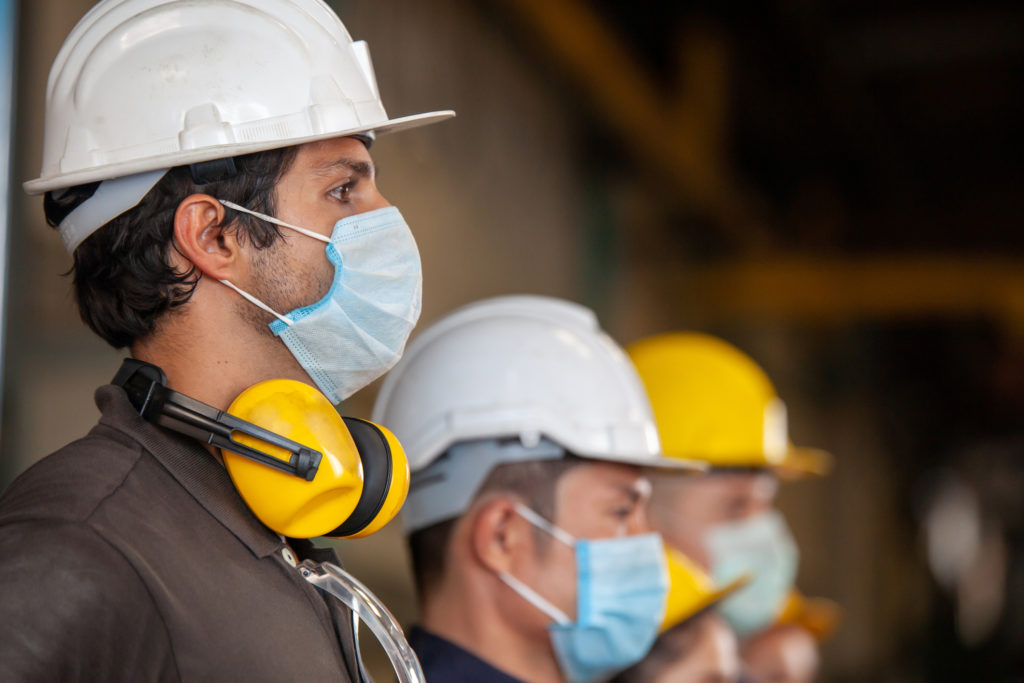Adapting to the New Normal In Manufacturing

Even as the effects of COVID-19 continue to ripple across the U.S. and the world, many day-to-day activities have already started to resume. Municipalities across the U.S. have begun the slow but steady process of reopening businesses, including the manufacturing sector. However, with the promise of reopening also comes the inevitable changes that will need to occur so that workers can return safely. Whether at a machine shop in Hillsboro or the local grocery store, we’ve already started seeing what our new “normal” may look like with the new inclusion of safety measures.
If history has taught us anything it’s that short-term measures put into place as a result of a global crises usually lead to changes that last decades. What many industries once considered as normal has already undergone the process of fundamentally shifting in ways that seem certain to become part of the new normal going forward. Manufacturers who recognize and act on this can seize an early opportunity to grow.
The Short-Term Impact on COVID on Manufacturers
The pandemic of 2020 impacted manufacturing in unprecedented and unexpected ways. For the first time in modern history, supply, demand, and the availability of the global workforce were all impacted simultaneously.
Businesses that play a role in delivering and producing vital goods, like toilet paper, are now struggling to meet the demand generated by panic buying on the part of the general public. Other types of businesses have experienced a significant drop in demand and extraordinary pressure to cut their operational expenses. Nearly every major manufacturer, whether a machine shop in Hillsboro or a parts supplier in Toledo, is currently experiencing some type of disruption along their supply chain for parts and raw materials. This is largely due to the volatility of supply chains originating or running through Asia, what may become a recurring issue.
Measures put into place to help protect employees and to reinforce social distancing have put added strain on manufacturers, as between 40 to 50 percent of their workforce becomes unavailable to perform their on-site job functions. As office workers and tech support staff may be able to transition to working at home, most factories simply don’t have the ability to run entirely by remote.
Long-Term Impact of COVID-19
The pandemic represents a historic moment for manufacturing industries in North America and West Europe. As companies attempt to plan for the short-term, they must also seek to find some type of clarity on what possible long-term changes the industry will face so they can get in front and adapt accordingly. Even though most of the trends mentioned below began before the pandemic, the current crisis will certainly accelerate their adoption within manufacturing industry.
The Resurrection of Automated Domestic Manufacturing: Western nations that have become dependent on off-shore suppliers for their basic needs are now starting to see the downside of what decades of off-shoring production has done to their internal capacity to produce. In an effort to drive down costs of daily goods, Western manufacturers can no longer produce the necessities they require during the pandemic. Machines account for 85 percent of GDP in developed nations, and a shift may lead to plans for returning manufacturing segments consider critical for national sustainability and resilience. Local and federal governments will almost certainly turn to domestic manufacturing as part of any plan to reduce strategic reliance on foreign suppliers as the aftermath of this current crisis continues to play out.
Automation will play a vital role in any effort to revive domestic manufacturing. While the willingness to off-shore production was born out of a desire to lower operating costs, advances in automation and robotics have already led to an increase in productivity across a number of manufacturing sectors. Many of these processes can be used domestically as part of a shift to reshoring. While automated manufacturing won’t create any new low level positions, it will increase the demand for skilled workers.
Separating the Supply Chain: The shock to global supply chains is something manufacturers have never before experienced, especially those reliant on long and inflexible supply chains that originate in Asia. In the near-term, manufacturers need to look for ways to quickly ensure production can continue by introducing improved flexibility. Companies that invest in making their supply chains more robust and predictable by using a wider base of global suppliers will have a significant advantage over the competition.
Embracing remote work and the “virtual shift.” Manufacturing can’t escape the need to have personal physically on-site. Operators need to run machinery, maintenance staff will need to make repairs, and vendors and contractors need to be able to access the manufacturing floor. When social distancing measures are put into place, manufacturers could face the reality of losing 50 percent of their available staff.
Dealing with this dilemma will force manufacturers to adopt the use of remote diagnostic, collaboration, and management tools. This will create the emergence of the “virtual shift,” where a team of specialists connected remotely and continuously online will monitor, guide, and support the smaller “physical shift” of people actually on-site. When backed by real time data, AI-based insights, and a host of available communications tools, off-site personnel will still possess the ability to perform their functions just as effectively as before.
History has shown us how global crises create fundamental shifts that impact everything from consumer behavior to government policies. Whether a machine shop in Hillsboro or a part of a supply chain in Asia, manufacturers need to anticipate and adapt to the changes that promise to soon become the new normal.
